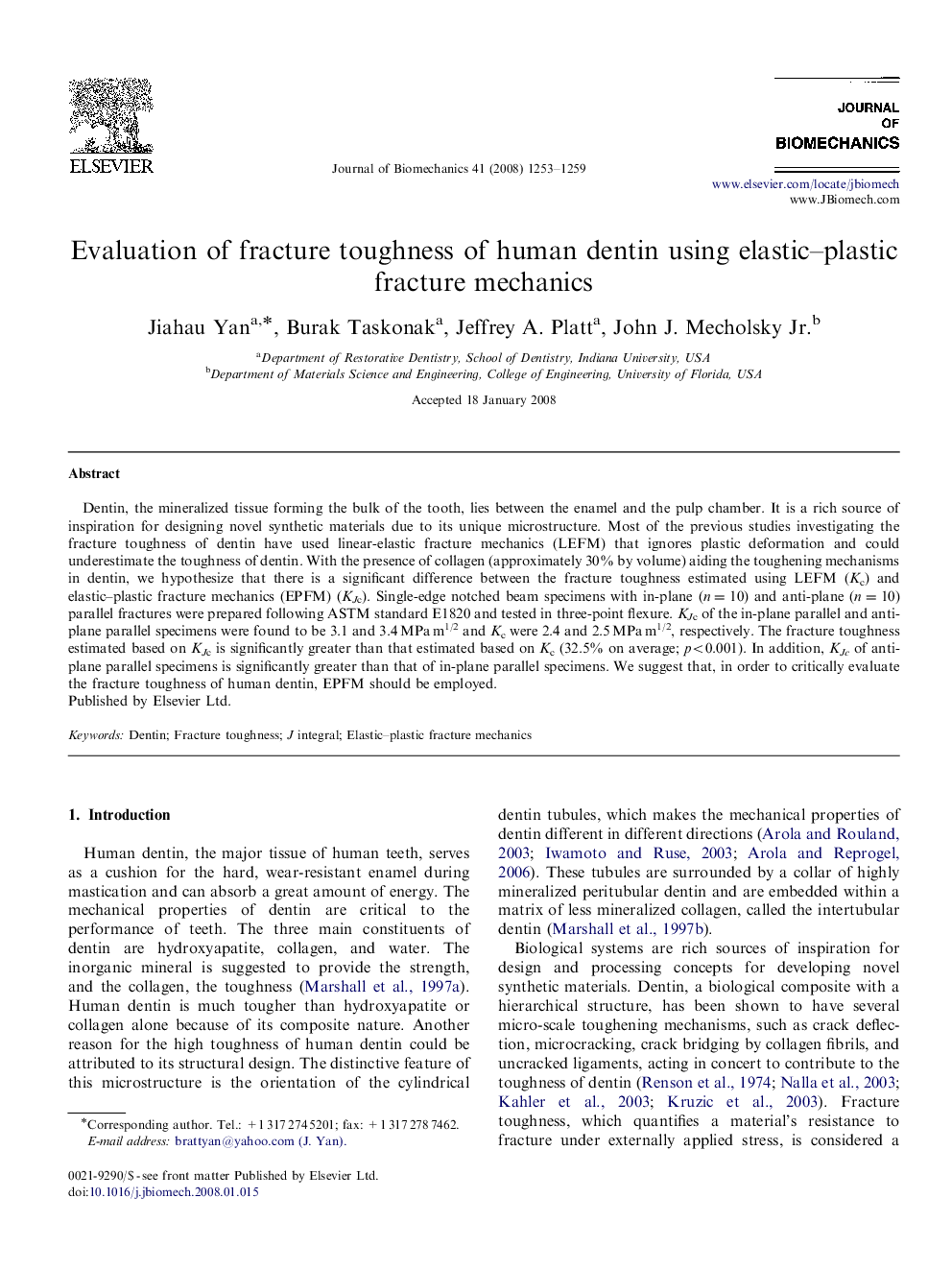| Article ID | Journal | Published Year | Pages | File Type |
|---|---|---|---|---|
| 873260 | Journal of Biomechanics | 2008 | 7 Pages |
Dentin, the mineralized tissue forming the bulk of the tooth, lies between the enamel and the pulp chamber. It is a rich source of inspiration for designing novel synthetic materials due to its unique microstructure. Most of the previous studies investigating the fracture toughness of dentin have used linear-elastic fracture mechanics (LEFM) that ignores plastic deformation and could underestimate the toughness of dentin. With the presence of collagen (approximately 30% by volume) aiding the toughening mechanisms in dentin, we hypothesize that there is a significant difference between the fracture toughness estimated using LEFM (Kc) and elastic–plastic fracture mechanics (EPFM) (KJc). Single-edge notched beam specimens with in-plane (n=10) and anti-plane (n=10) parallel fractures were prepared following ASTM standard E1820 and tested in three-point flexure. KJc of the in-plane parallel and anti-plane parallel specimens were found to be 3.1 and 3.4 MPa m1/2 and Kc were 2.4 and 2.5 MPa m1/2, respectively. The fracture toughness estimated based on KJc is significantly greater than that estimated based on Kc (32.5% on average; p<0.001). In addition, KJc of anti-plane parallel specimens is significantly greater than that of in-plane parallel specimens. We suggest that, in order to critically evaluate the fracture toughness of human dentin, EPFM should be employed.
